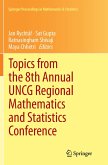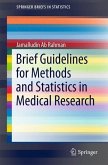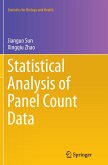This textbook will help graduate students in non-statistics disciplines, advanced undergraduate researchers, and research faculty in the health sciences to learn, use and communicate results from many commonly used statistical methods. The material covered, and the manner in which it is presented, describe the entire data analysis process from hypothesis generation to writing the results in a manuscript. Chapters cover, among other topics: one and two-sample proportions, multi-category data, one and two-sample means, analysis of variance, and regression. Throughout the text, the authors explain statistical procedures and concepts using a non-statistical language. This accessible approach is complete with real-world examples and sample write-ups for the Methods and Results sections of scholarly papers. The text also allows for the concurrent use of the programming language R, which is an open-source program created, maintained and updated by the statistical community. R is freely available and easy to download.
From the book reviews:
"This book provides a guide on the application of the R statistical software to solutions of standard statistical problems. It is written for non-statisticians, mainly biologists and physicians. Some general explanations of statistical methodology with simple formulas are presented. The book topics include proportions comparison, contingency tables, two-sample means comparisons, ANOVA, linear regression, measures of association. Classical visualization tools are also discussed, such as histograms, QQ and scatterplots." (R. E. Maiboroda, zbMATH 1306.62022, 2015)
"This book focuses on helping a researcher conduct their own analysis of data. The book lays out the process of basic statistical analysis, the importance of assumptions, and how to communicate the results. ... It emphasizes a disciplined approach, a thorough examination of the assumptions and a structured communication of the results, which are valuable commodities in all settings." (Roger M.Sauter, Technometrics, Vol. 56 (4), November, 2014)
"This book provides a guide on the application of the R statistical software to solutions of standard statistical problems. It is written for non-statisticians, mainly biologists and physicians. Some general explanations of statistical methodology with simple formulas are presented. The book topics include proportions comparison, contingency tables, two-sample means comparisons, ANOVA, linear regression, measures of association. Classical visualization tools are also discussed, such as histograms, QQ and scatterplots." (R. E. Maiboroda, zbMATH 1306.62022, 2015)
"This book focuses on helping a researcher conduct their own analysis of data. The book lays out the process of basic statistical analysis, the importance of assumptions, and how to communicate the results. ... It emphasizes a disciplined approach, a thorough examination of the assumptions and a structured communication of the results, which are valuable commodities in all settings." (Roger M.Sauter, Technometrics, Vol. 56 (4), November, 2014)








